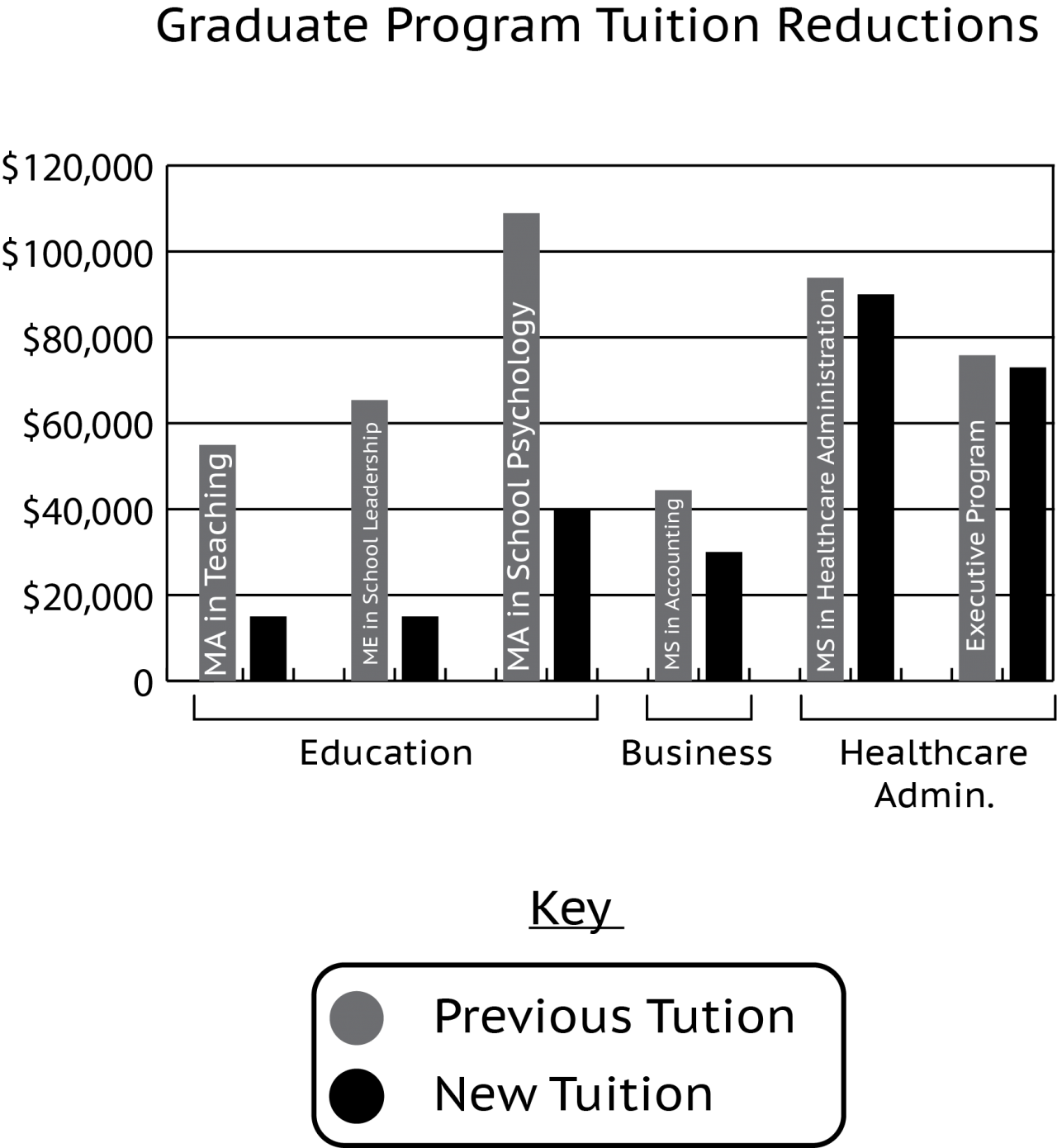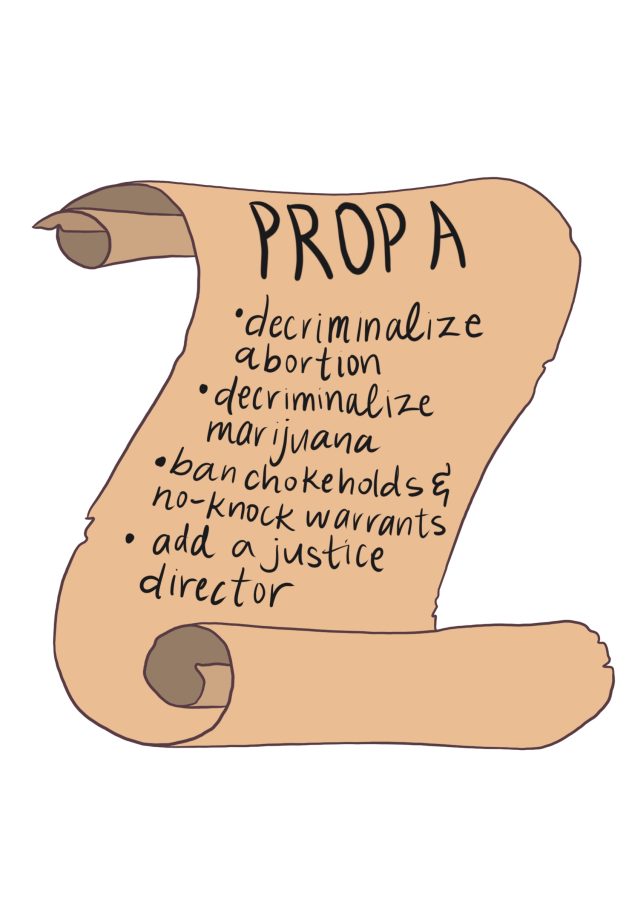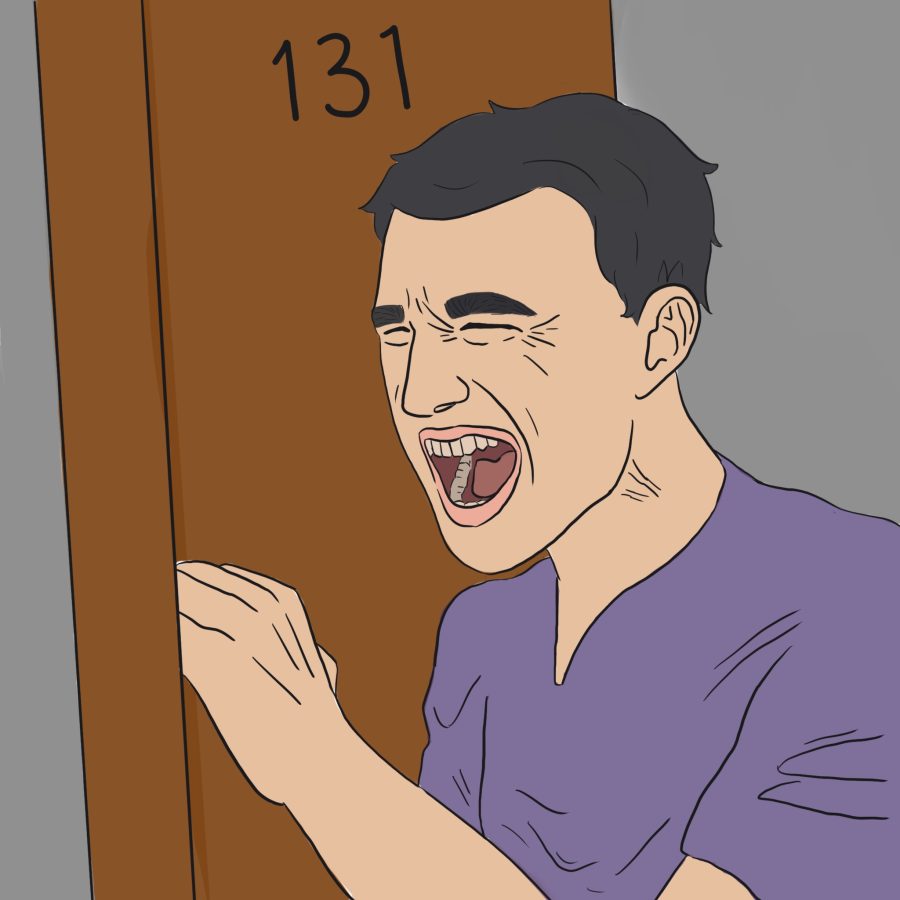Graphic by Quinn Butterfield
The Board of Trustees voted to approve a new tuition model for graduate programs at Trinity University at their Sept. 12 meeting. The new model will uncouple graduate program tuition from the per-credit-hour rate of undergraduate tuition, allowing each graduate program to set a fixed and competitive price for their programs. The new pricing will go into effect in the 2020-2021 academic year, and students currently enrolled in multi-year programs will be eligible for the new rate.
The three master’s programs in the Department of Education will receive the most drastic reduction to tuition. The base tuition for the Master’s of Arts in Teaching (MAT) program will reduce from $54,944 to $15,000. The tuition for the Master’s in Education in School Leadership will reduce from $65,380 to $15,000, and the tuition for the three-year Master’s of Arts in School Psychology program will reduce from $108,894 to $40,000.
Other reductions are less extreme. Other changes are less extreme. The tuition for the two-year on-campus program for a Master’s of Science in Health Care Administration will reduce from $93,867 to $90,000, while the executive program will reduce from $75,836 to $73,000. The Master’s of Science in Accounting will receive a tuition reduction from $44,398 to $30,000.
The current tuition model is coupled to the undergraduate tuition at a per credit rate, which means that when undergraduate tuition goes up, graduate school tuition goes up as well. According to Eric Maloof, vice president for Enrollment Management, this is very unusual for schools that offer undergraduate and graduate programs.
“What that means is that all graduate programs were priced the same per credit hour, so if you want an MAT, it is priced the same as Health Care Administration under our old model. When you look at job prospects, when you look at outlook of career and earnings, that just doesn’t make sense,” Maloof said. “It was a highly inefficient model because our professors knew that we were high priced and they were having to go out and fundraise, they had to leverage Trinity scholarship money and play the financial aid game. We found out that we were under capacity in some programs and had very unpredictable revenue.”
Now, graduate program tuition will adopt a “market-based” model, meaning tuition rates will be determined separately from undergraduate tuition, and the price will be fixed, or not be dependent on the number of credit hours.
The decision to reevaluate the graduate program tuition model is the result of extensive market research performed over the last two years by university leadership. Unlike at the undergraduate level, the faculty of graduate programs make admissions and scholarship decisions for their respective programs. Until 2017, the application system ran through the Office of the Registrar and contained little analytics. Now, graduate program applications run through the Office of Admission’s customer relationship management system, Slate, which collects data that was used in reevaluating the tuition model.
“The university did not necessarily pay as much attention to [graduate programs] as they had undergraduate enrollment. A few years ago, what we did was we sought to rectify this,” Maloof said. “We were able to do a full-scale review as commissioned by Dr. Anderson and Dr. Jones, and we did market research, we did competitor analysis, we looked at research and reporting trends, we looked at pricing, scholarship and financial aid strategies, and then we looked and saw what was happening, what was the revenue for each program, what was the discount rate, how were they running their programs individually.”
What they found was that Trinity’s graduate programs were priced above their competitors, especially when it came to the programs in the Department of Education.
“Our competitors, for example the public institutions, they’re charging to become a teacher anywhere between 10 and 15 thousand dollars. Our competitors were charging about 12 to 15 thousand to become an administrator, and then about 30 thousand to become a school psychologist,” said Oscar Jiménez-Castellanos, chair of the Department of Education.
In all programs, students were eligible for financial aid and scholarships that reduced the out-of-pocket cost.
“So, on average, our teaching candidates used to pay about 25 thousand out-of-pocket after the scholarships, but we could never guarantee them that because that’s after they go in the pipeline and they get those scholarship funds,” Jiménez-Castellanos said. “So we’re going to be upfront about the sticker price that’s competitive with the marketplace.”
While students were, on average, not paying the advertised price, this created unnecessary hassle for faculty, who are tasked with allocating scholarships to make the price manageable for applicants. Though students will still be eligible for financial support, the net amount of this aid will be greatly reduced, according to Maloof. The new model will also lock in price for multi-year programs.
“It also means that once you start the program, you’re not going to be subject to a price increase in the middle of the program. Right now, when a student starts the program, we have to kind of say, ‘You know what, we don’t know what’s going to happen come next year. Tuition’s going to go up, but we don’t know by how much,’” said Eric Schumacher, chair of the Health Care Administration program.
Like Health Care Administration, the accounting program was also found to be competitively priced.
“The accounting program is more appropriately priced based on our competition. We want to keep our best students here if they want to continue their education here in one of these programs. We do not want to lose them to other programs,” Maloof said.
Despite the cuts in tuition, the budgets of these programs will not be reduced.
“The budgets for these programs will not be affected. The way it works is that the tuition revenue that is generated by these programs actually goes back into the larger tuition revenues of the university,” Maloof said.
The new pricing model will also allow for more predictable enrollment numbers, and therefore more predictable revenue for the university. Previously, enrollment in programs like school psychology was unpredictable. According to Jiménez-Castellanos, without the tuition reduction, this program was at risk of abolishment. Now, the new tuition model will open new possibilities for the future of the three programs.
“This will allow us to go into a model that I call ‘critical impact.’ Critical impact means now we’re able to potentially train and prepare more teachers, more leaders and more school psychologists because of this tuition reduction, because it’s going to be more accessible to them in terms of the price. Now, the challenge becomes how do we actually maintain the quality of the Trinity program if we increase the numbers we produce?” Jiménez-Castellanos said. “It gives us an opportunity to grow if and when it’s the right time.”
Maloof explained that this switch in tuition model truly benefits all parties.
“There really is not a catch. This is great for everyone. And it’s rare that all parties interested can benefit, but hopefully we’re on the right path,” Maloof said.
Schumacher is grateful for the support.
“I think it’s just a positive sign that the administration is paying attention to the graduate programs and recognizing that we have some really great graduate programs that have helped Trinity a lot, and so the fact that they’re supporting the graduate programs is really important,” Schumacher said.













